
Roopa Chauhan
March 28, 2024
Yuval Sharon directed the Detroit Opera’s production of John Cage’s avant-garde musical concept, Europera’s 3 & 4, which took place on March 8-10, 2024 at the iconic Gem Theater. It was an intimate setting, steeped in Detroit’s history, for a performance that invited audiences, like many of the Detroit Opera House’s recent productions, to reconsider and rediscover the operatic form.
The stage spilled over into the house creating three levels: the clock, the main stage, and the house floor, which was flush with the audience. Two wonderful pianists (Marina Stojanovska and John Etsell) framed Sharon and the dancers (Biba Bell, Celia Benvenutti, and Chris Woolfolk).
When on the house floor, Sharon and the dancers turned into DJs or turntabilists (to employ the production lingo) playing records that were completely unrelated, but not necessarily disconnected, to what was happening above them on stage.
Each pianist played a random selection of pieces by Hungarian composer Franz Liszt (1811-1886); they were not there to accompany the performers, but, rather, add to the musical commotion. The tiered stage echoed the arborescent layering in sound and movement to which the Europeras universe lends itself.
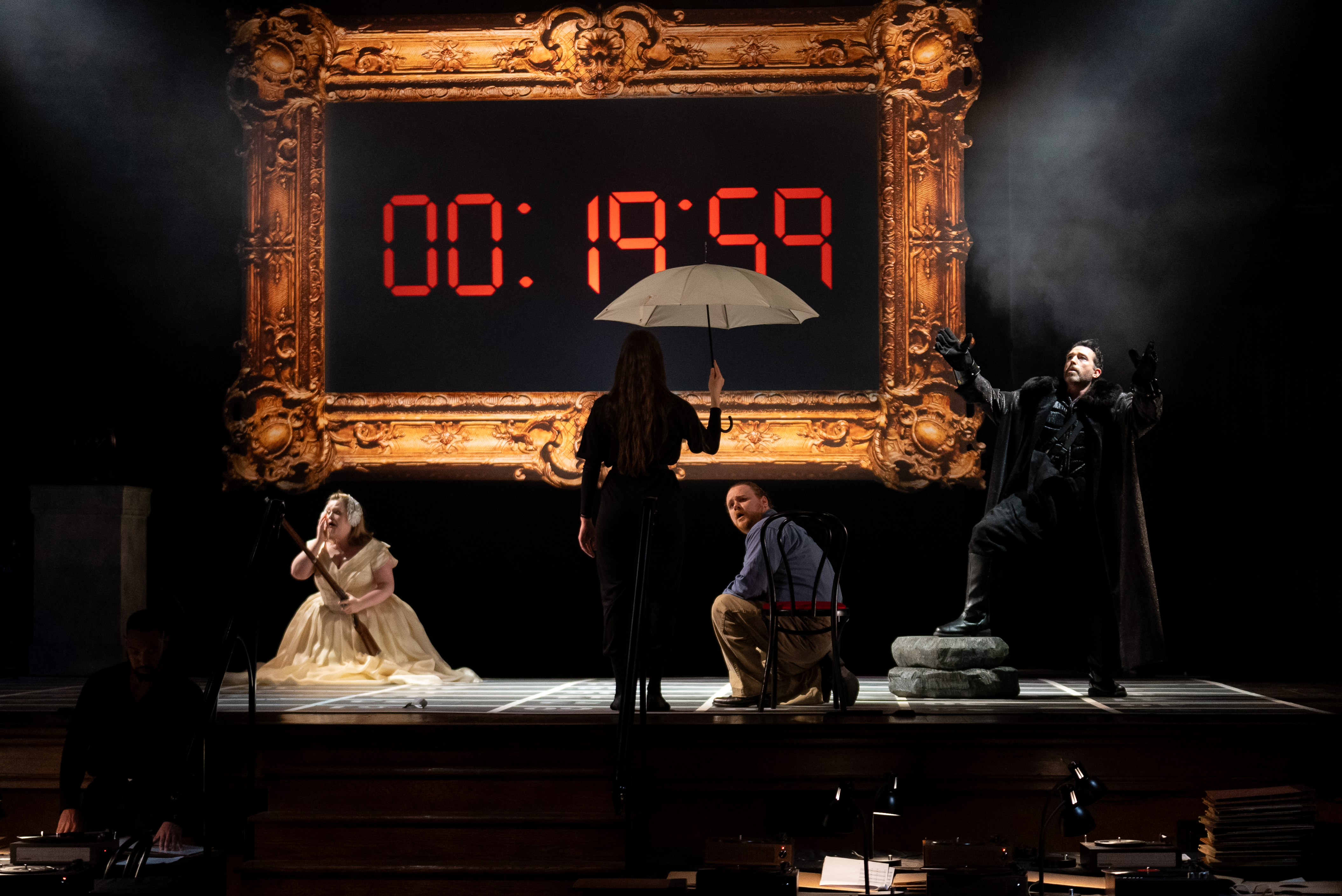
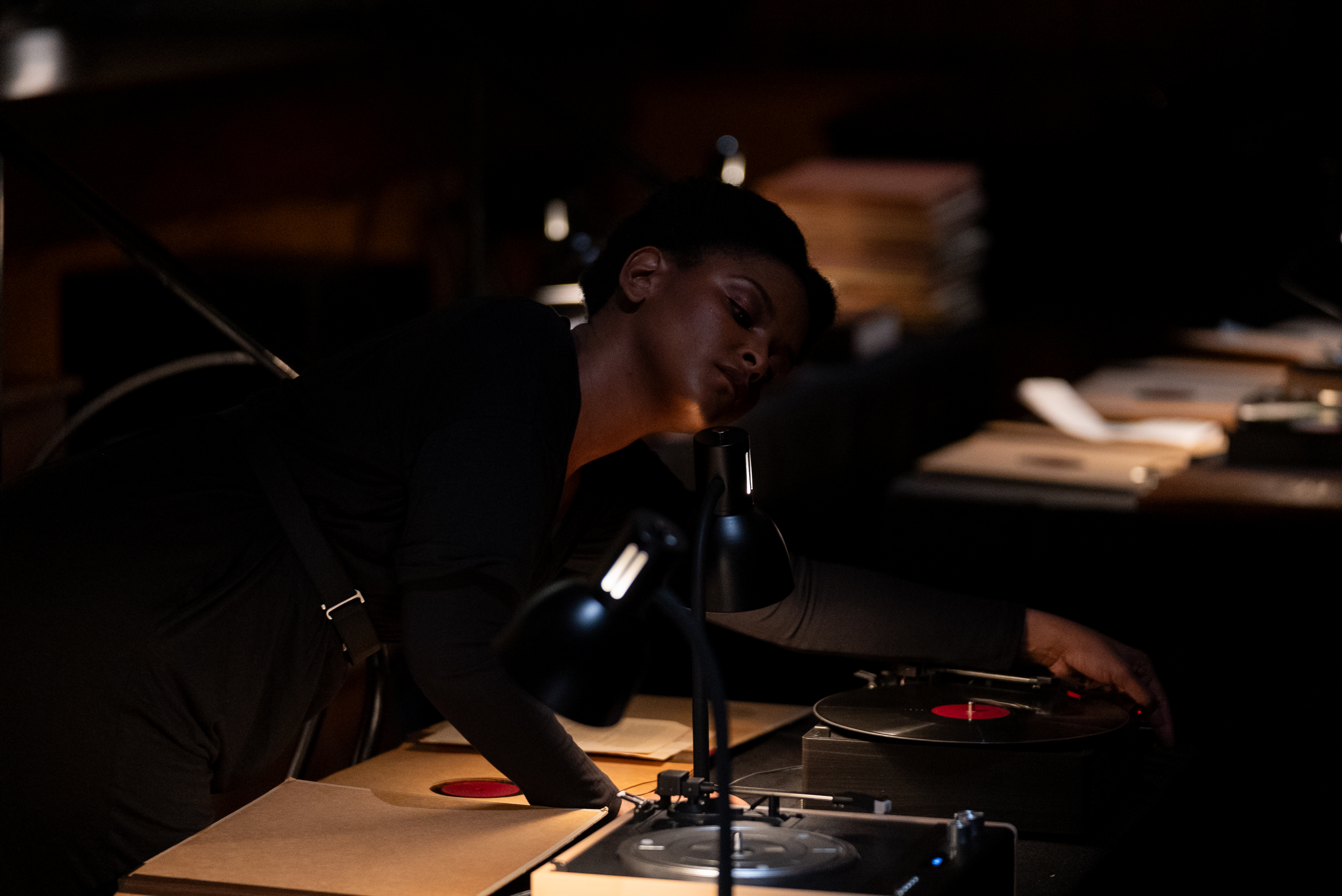
Musical threads from Mozart to Puccini wove a complex tapestry while singers and dancers performed pieces that ostensibly had no relationship to one another. But sometimes the movement and music came together in what Zac Bru of The Detroit Bureau of Sound called “moments of verticality” with the serendipity leading to unexpected duets and trios.
At the Opera Talk preceding opening night, Bru put John Cage’s work into context by explaining how the composer was a pioneer in electronic music and a precursor to techno. To give us a taste of what awaited us in Europeras 3 & 4, Bru performed Cage’s Child of Tree, a piece that literally “plays the cactus” by amplifying the sound cactus needles make when they are strummed or plucked.
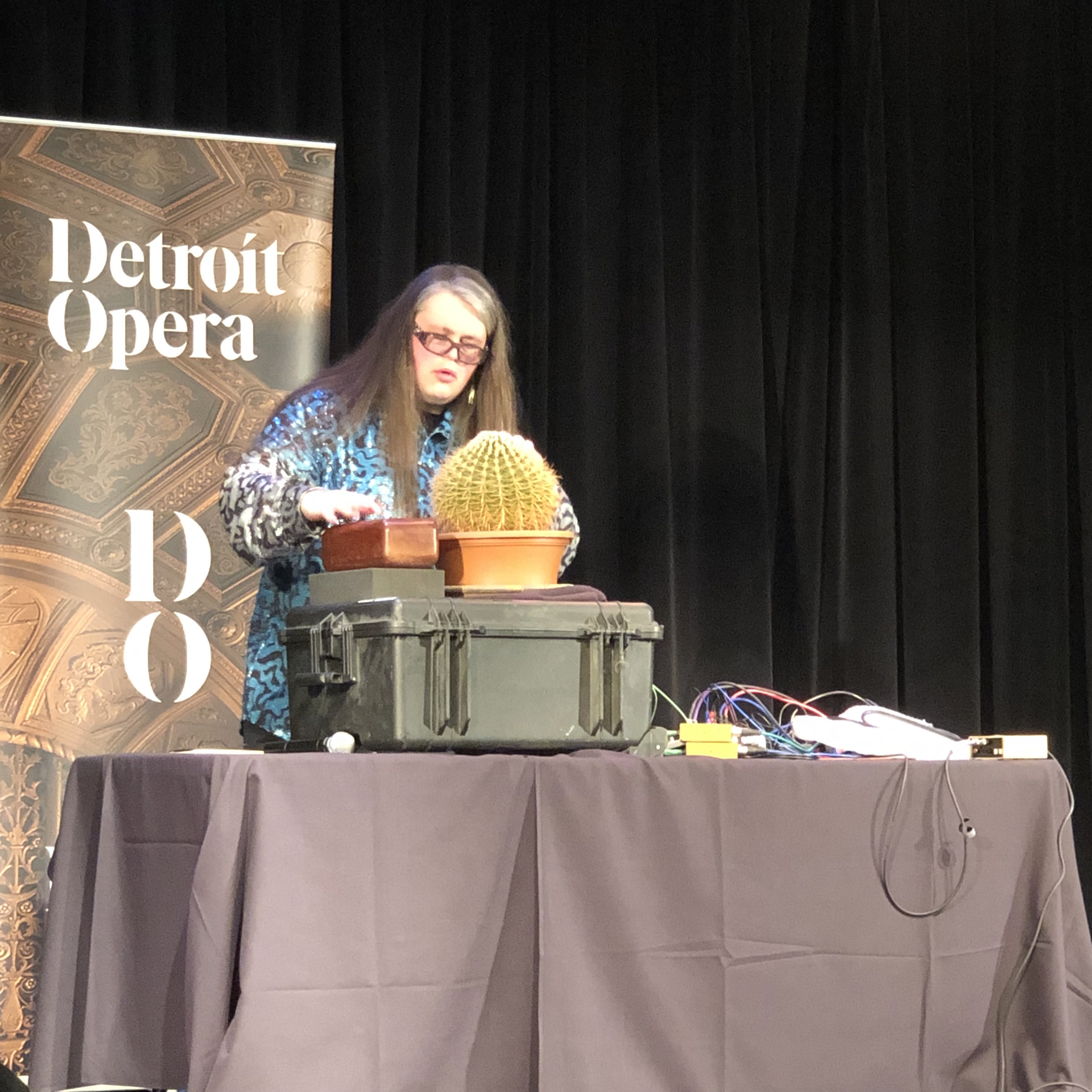
Since everything happened on stage all at once, it was surprising that the performers did not compete to be seen or heard. They gave each other space to do their own thing striking the right balance between enveloping themselves inside an artistic bubble and bursting it to make dissonant connections. The cast and crew’s talent, skill, and commitment to the random, non-linear nature of this piece was remarkable to behold.
The audience’s physical proximity to the performance made it easier to embrace the chaos generated by this post-modern collage of arias brought together through the wisdom of the I Ching, an ancient Chinese divination tool and philosophy central to John Cage’s musical compositions in which East most certainly meets West.
Any production of the five Europeras is site-specific and unique. Unlike traditional opera where performers conform to the mold created by the character and the voice type (soprano, mezzo-soprano, tenor, bass, etc), Europeras adapts to where and when they are staged as well as to the performers themselves.
In this production of Europeras 3 & 4, the set, costumes, and props were all recycled from the Detroit Opera House stores. The music was also re-purposed from the operatic and classical music canon. Each singer was at liberty to choose six arias to perform. An I Ching coin toss decided the order in which they were sung and the costumes they would wear while singing the piece. Neither matched. The dissonance extended from the music to the production’s sartorial choices.
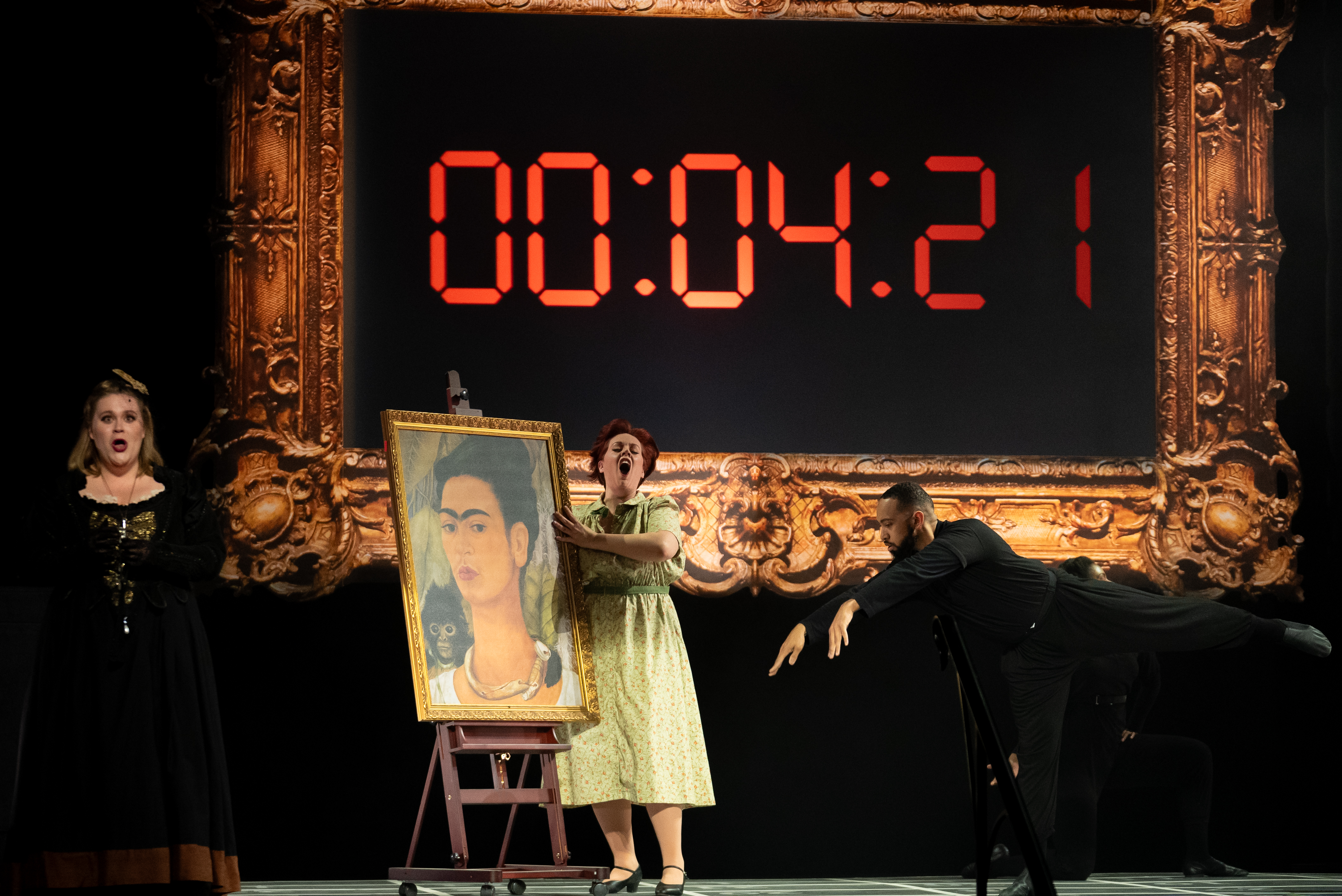
Being in the audience was like sitting at a café on a street corner watching the world go by. The stage became a cityscape layered over a soundscape that was continually transforming before our eyes and ears as layers appeared and disappeared creating a musical palimpsest of sorts.
And here, the extraordinary talent on display cannot be underscored enough. The young singers from the Detroit Opera’s 2023/24 Resident Artist Program, Melanie Spector, River Guard, and Rolfe Dauz, stunned with their beautiful voices and acting chops.
Soprano Jennifer Cresswell drew quite a few laughs with her absurdist rendering of a woman obsessed with finding a key that she then immediately lost. Bariton Robert Wesley Mason added an extra dose of humor and dramatic flair as he rode a bike across the stage. Soprano Kisma Jordan created tension as she fought an invisible force with an odd contraption that blew puffs of smoke into the air.
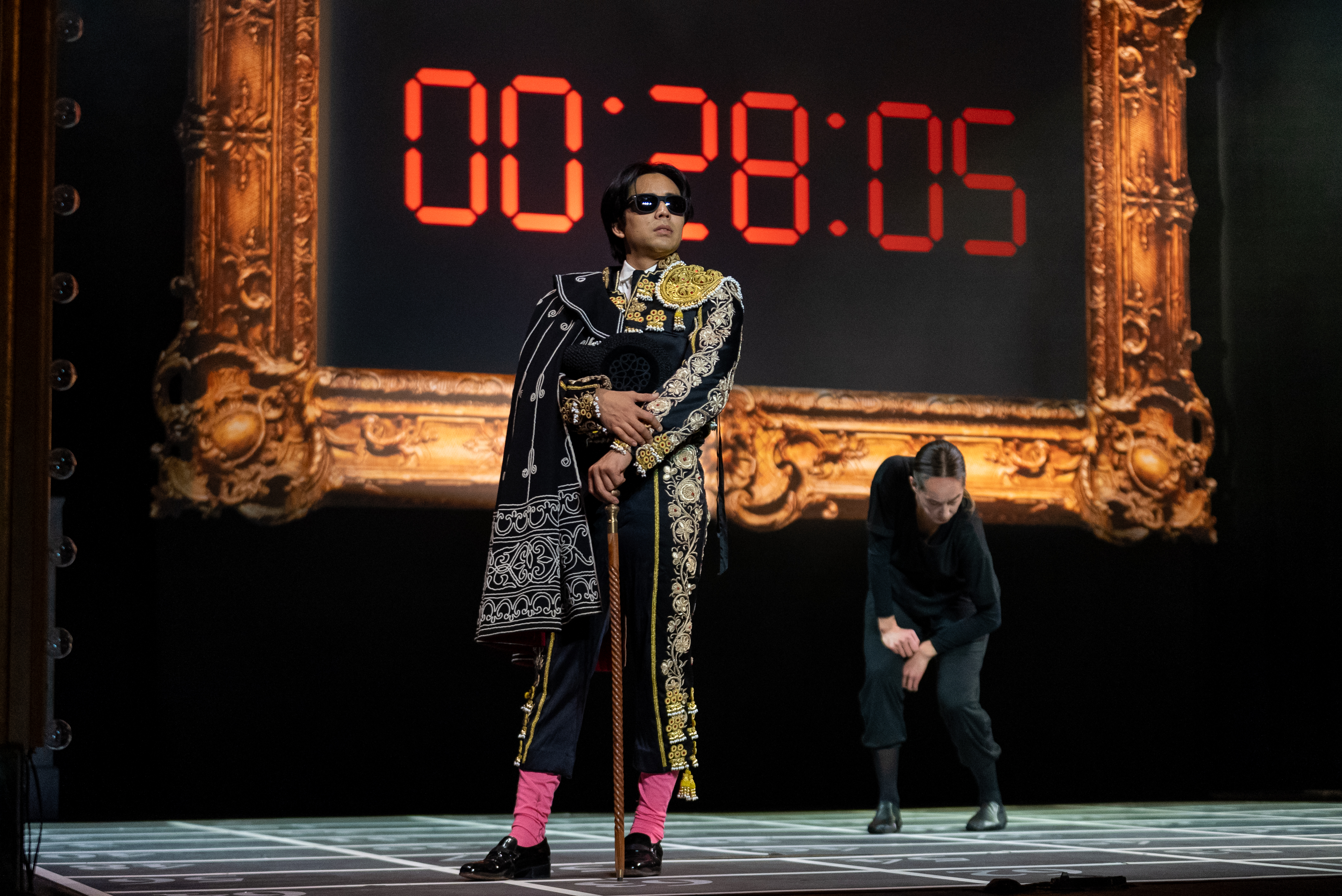
Dancers Biba Bell, Celia Benvenutti, and Chris Woolfolk each brought their unique corporeal language to the disparate musical conversations taking place. Bell generated height - a kind of vertical energy; Benvenutti conveyed strength and groundedness; and Woolfolk moved with a light touch – at times, he seemed to float. Their razorsharp focus was palpable.
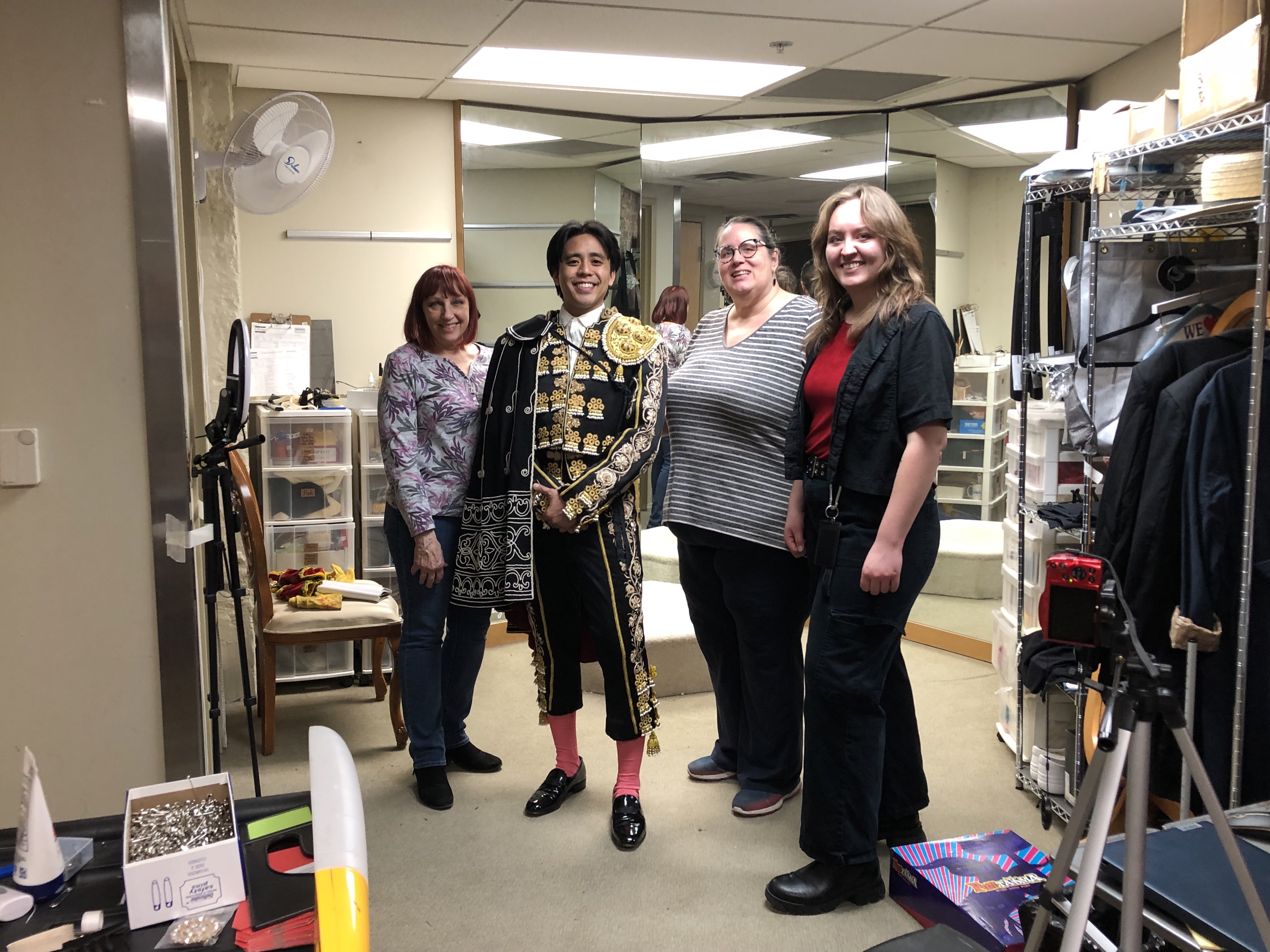
The entire Europera 3 cast threw themselves into the experience headfirst and their delight in the preposterousness of it all was evident – and after 70 minutes the wild ride was over.
Europera 4 was more pared down. Only two singers, the legendary mezzo-soprano Susan Graham and one of opera’s rising stars bass-baritone Davóne Tines (who sang the title role in Detroit Opera’s X: The Life and Times of Malcolm X in 2022) remained on stage. The tone was solemn, sober – more introspective perhaps. The structure also shifted from operatic to song recital. At the piano, Liszt continued to play while Graham and Tines sang unrelated (of course!) pieces from the operatic repertoire. Though not complete, the unravelling of the elite, highbrow culture opera has come to represent, was well underway.
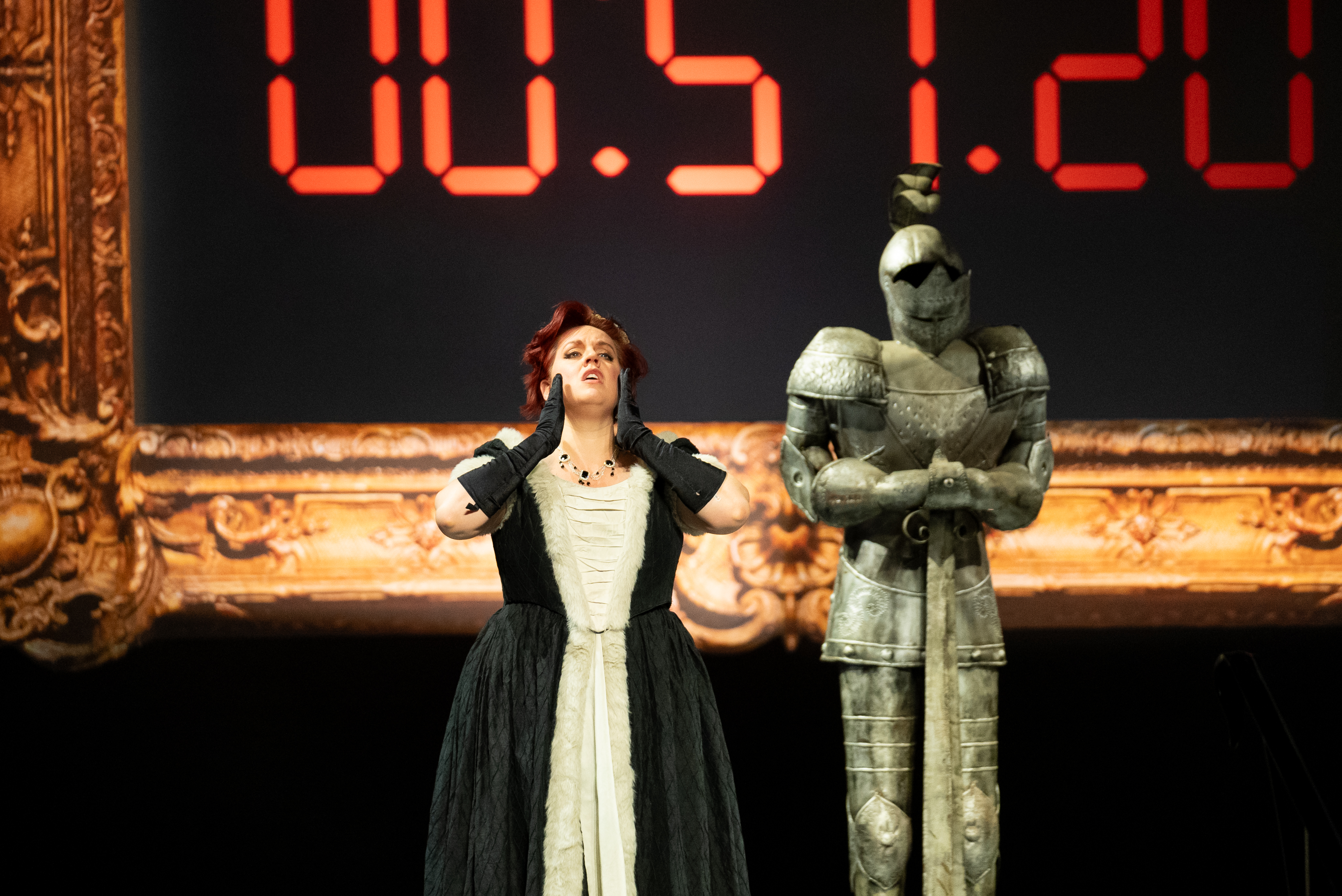
.jpg)
Watching Europeras 3 & 4 is a unique experience because it is rarely staged. The pieces are not readily accessible. Many would argue that they are downright alienating, pretentious, elitist, and exclusionary in their own way. The show was definitely not everyone’s cup of tea. Some stomped out in the middle of the performance while others left during intermission. But somehow this did not detract from the drama unfolding on stage. That certain members of the audience chose to reject Cage’s proposition outright fit the show’s iconoclastic vibe; it was par for the course.
A few minutes before the performance, Sharon asked us to give in to the experience, to let it wash over us as we might while meditating. And from an audience’s perspective, the chaotic sights and sounds unfolding before us were, indeed, like a river flowing. Some of us dove straight in while others fled as soon as they could. It can be challenging to find resonance in a show that has no identifiable plot or characters even when that might be the point.
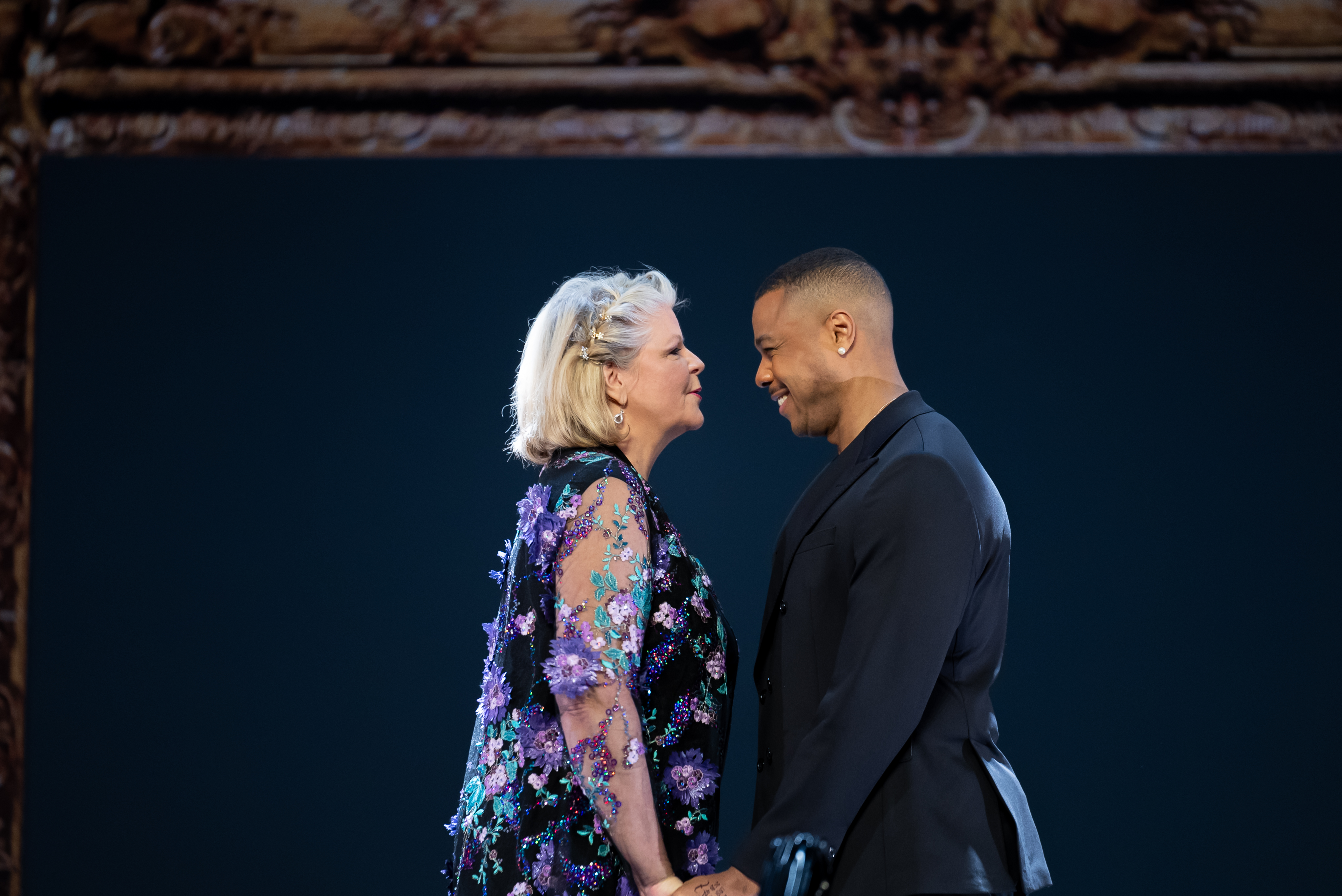
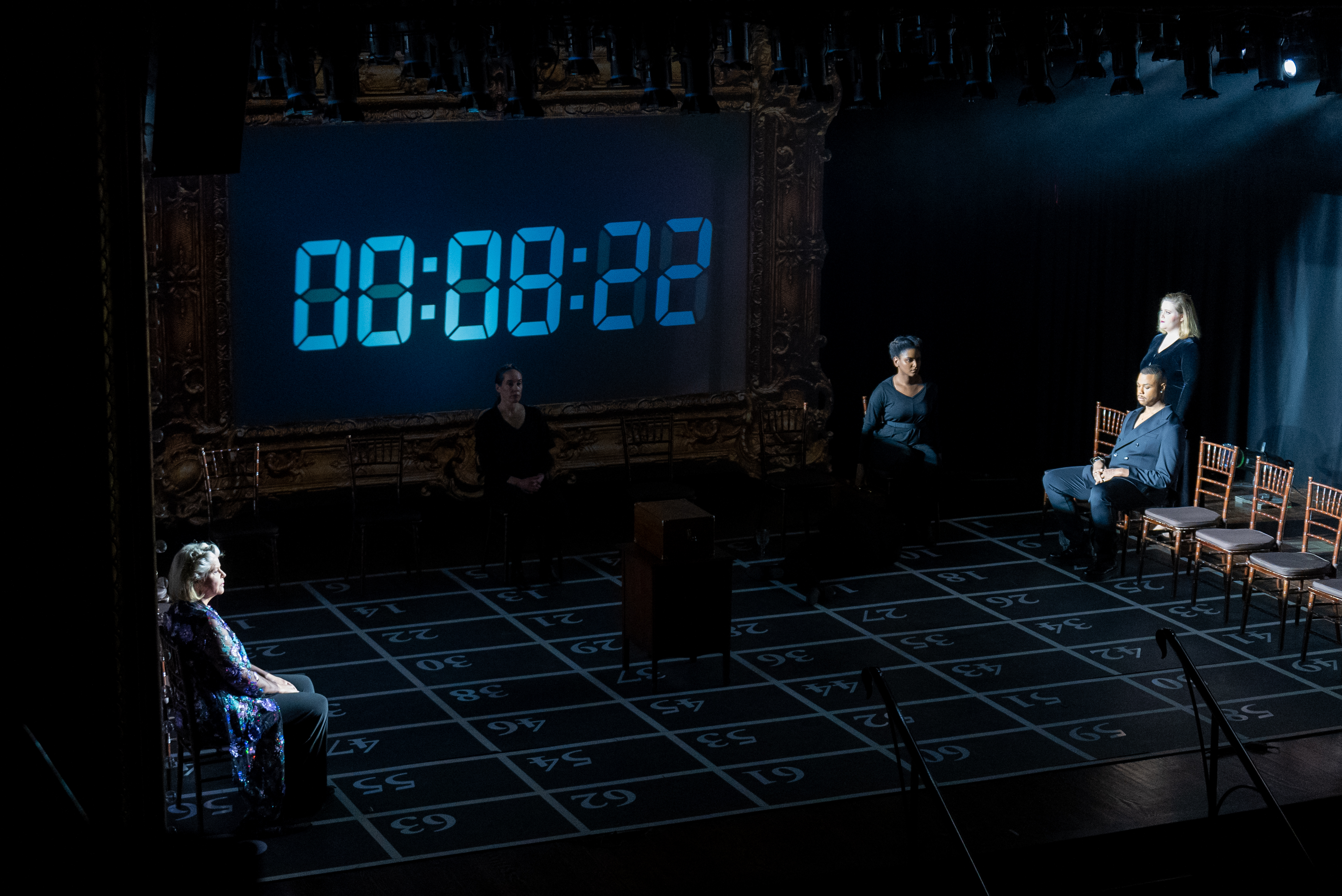
For many opera goers, preserving operatic tradition necessarily entails remaining faithful to the period when they were first performed. They tend to perceive contemporary renderings of beloved operas as anachronistic. They prefer traveling backwards through time while composers like John Cage and Artistic Directors like Yuval Sharon question opera’s legacy and would like to take the genre in a new direction.
Has a line in the sand been drawn? Are these two sides diametrically opposed? Is there no way to bridge the divide? Can we be both traditionalist and avant-gardist? But ultimately, is it not wonderful that we are asking these questions? John Cage and Wolfgang Amadeus Mozart would certainly agree.